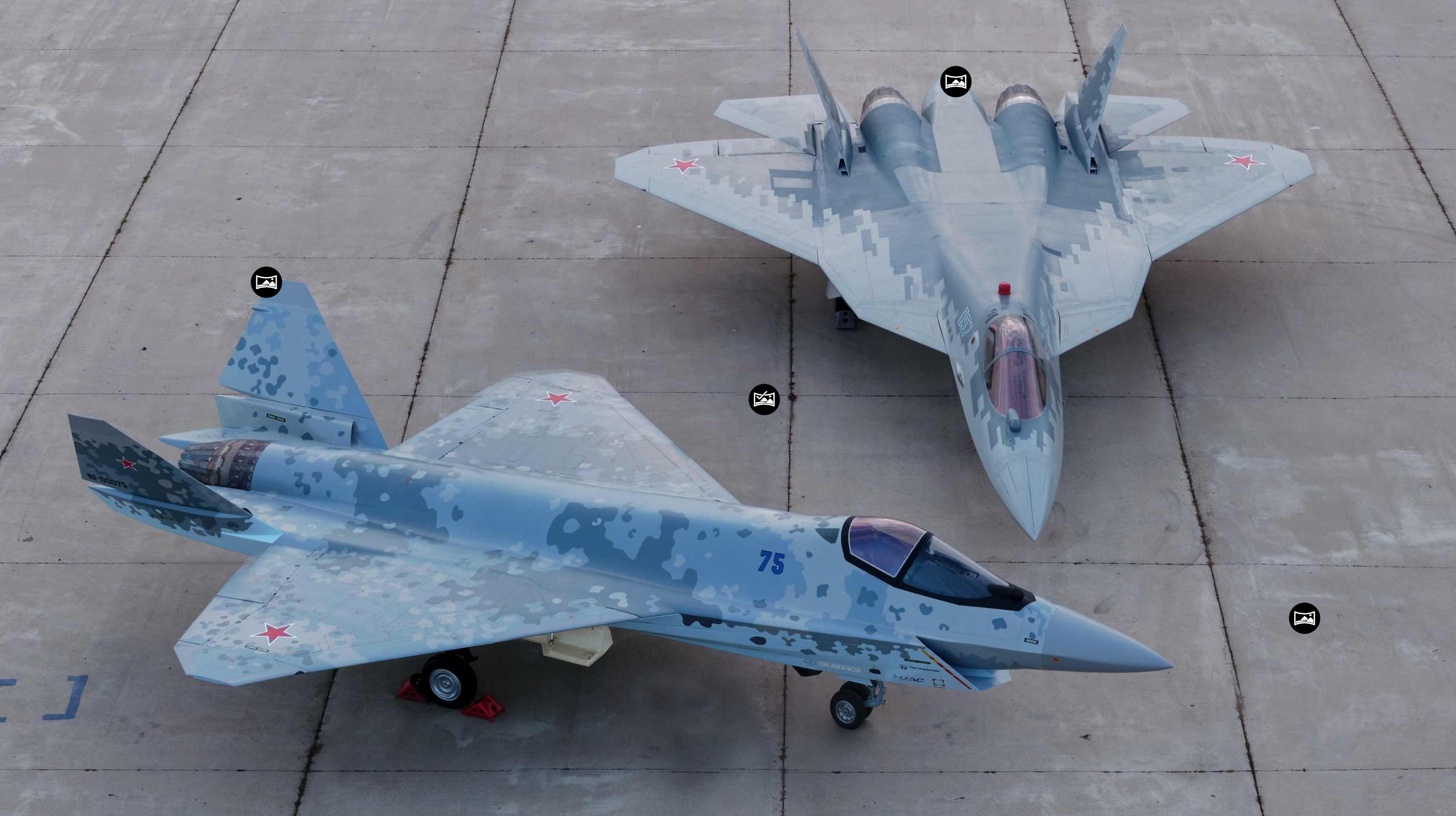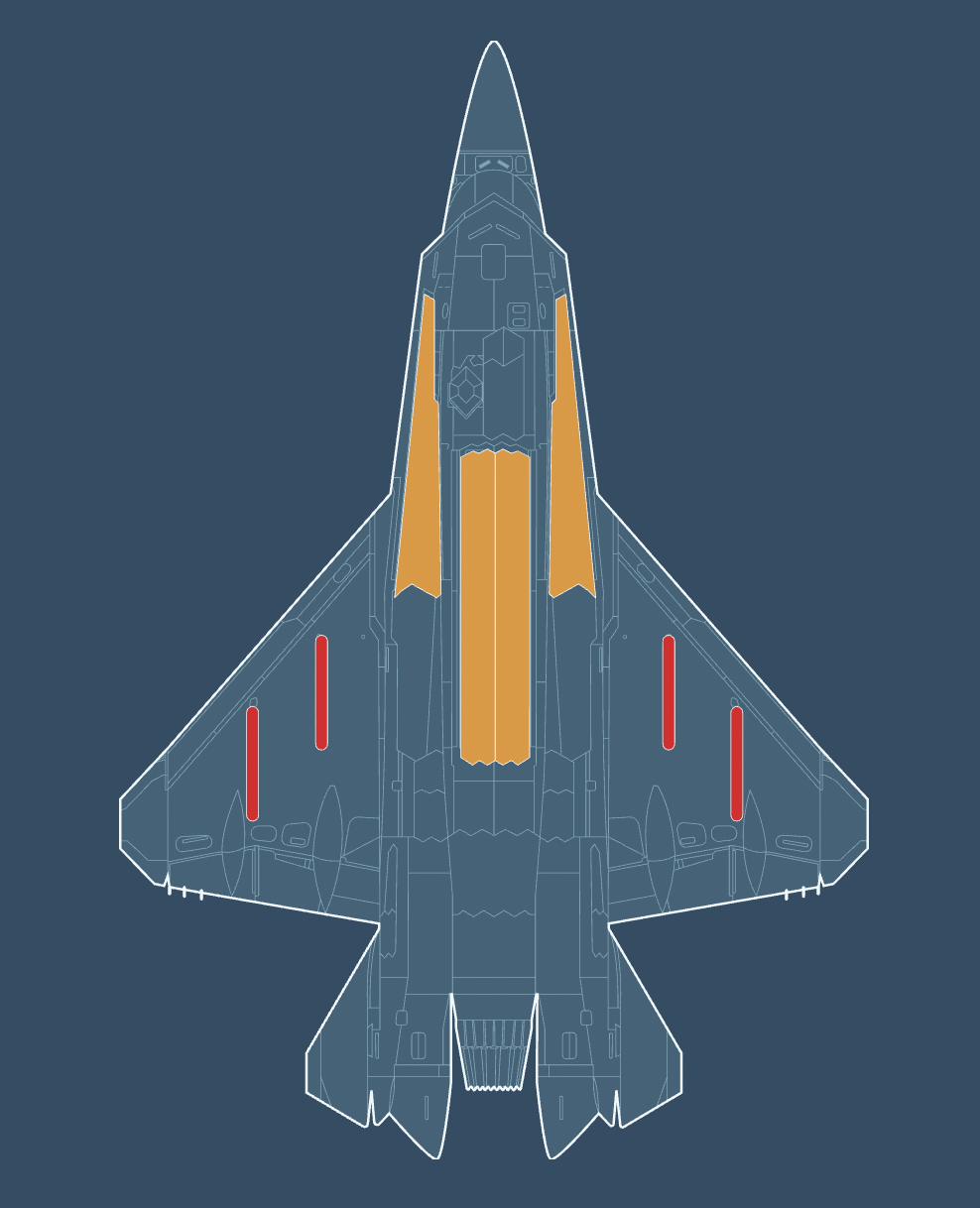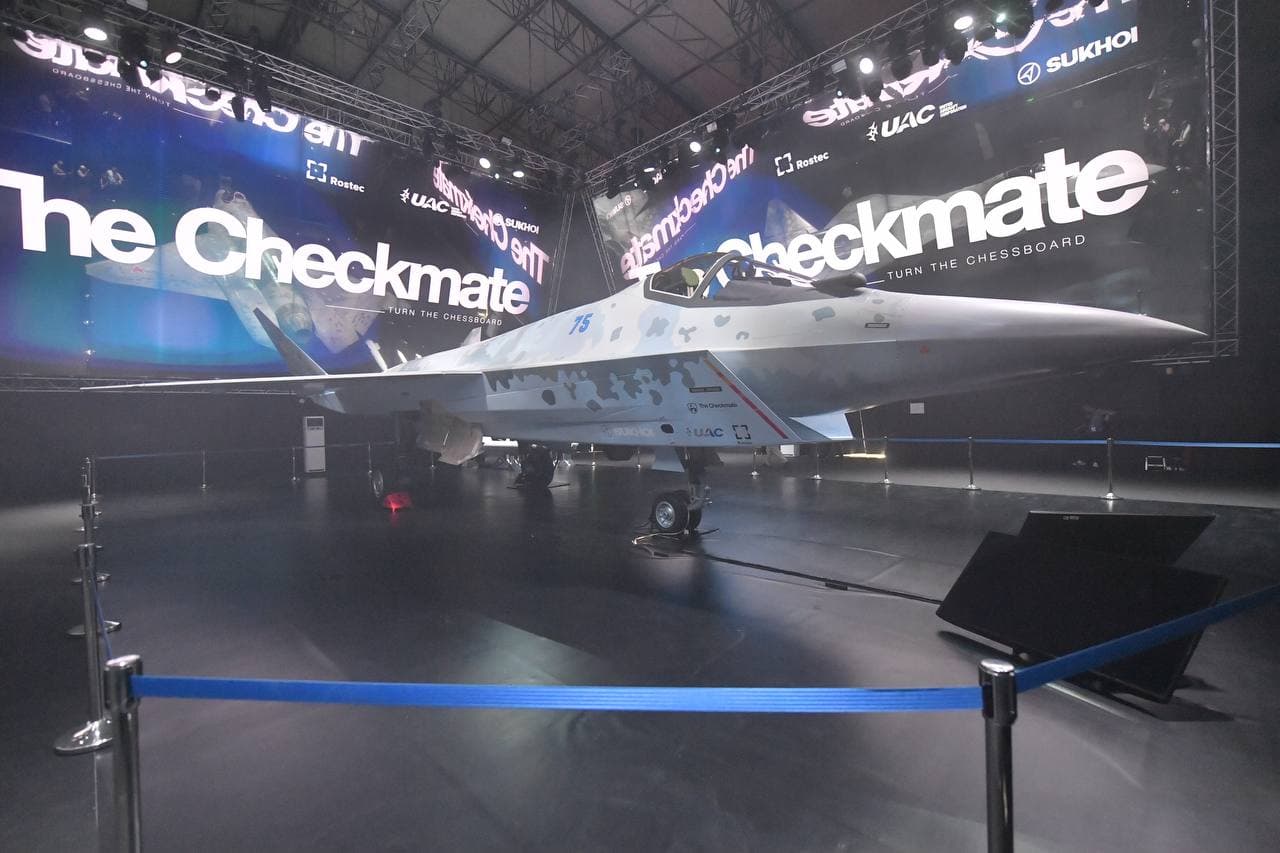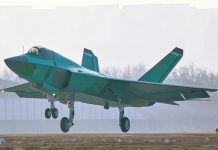The Russian Sukhoi Su-75 Checkmate has made the cut to the top 10 list of achievements in military aviation for 2021.
The list compiled by the leading American magazine, Aviation Week & Space Technology, said that the Russian light tactical stealth aircraft made it to the list for its first flight of an “unmanned wingman” and the first aerial refueling performed by an unmanned aerial vehicle, according to TASS.
Checkmate is designed to be a low-cost alternative to the Lockheed Martin F-35 Lightning II. Production is forecast to be 300 planes over 15 years. According to the chief executive of Rostec, Sergei Chemezov, Checkmate is expected to cost $25-30 million each.
This is less than half of Saab Gripen ($85 million) and substantially cheaper than the US’ F-35 ($115 million) French Dassault Rafale ($115 million) and Russia’s Su-57 ($100 million).
The modern aircraft, the second fifth-generation jet after the Su-57, is being seen as a game-changer by many. The manufacturer of Su-75 told TASS that the new light combat aircraft would be capable of striking any target on a future battlefield and would be capable of accomplishing mission tasks without entering into an area controlled by an adversary’s air defenses.

Checkmate will be able to carry a group of drones on board, according to the presentation of Rostec during the first demonstration of the prototype of the aircraft at the MAKS-2021 air show.
The aircraft is likely to be powered by a derivative of the NPO Saturn AL-41 engine, which is also installed on Su-57. It will have a maximum speed of Mach 1.8 and supercruise performance – the ability to sustain supersonic flight without the use of an afterburner.
Checkmate includes all the most advanced developments, including an open architecture of building in the interests of the customer and unique artificial intelligence technologies. The aircraft is made using stealth technologies and is equipped with an intra-fuselage compartment for air-to-air and air-to-surface aircraft.

The payload mass exceeds seven tons. The fighter will be able to simultaneously hit up to six targets. The single-engine aircraft will have a combat radius of 3,000 km.
Meanwhile, leading defense analysts see a high possibility of India acquiring the aircraft, arguing this will not impact the development of the country’s indigenous fifth-generation AMCA jet.
Russia had earlier claimed that countries such as India, China, and Vietnam are among potential buyers of the new light fighter jet. The manufacturer plans to produce 300 single-engine light tactical fighter jets within the next 15 years based on the demand.
Is India A Potential Buyer Of Checkmate?
Abhijit Iyer-Mitra, a senior fellow at the New Delhi-based Institute of Peace and Conflict Studies (IPCS), had previously said that there are very high chances for India to go for the new Russian jet.
“IAF plans to acquire a single-engine jet has been on the anvil for the last 20 years. The MMRCA competition under which India had to acquire 126 fighter jets, initially was for a single-engine jet but was later diverted as Sukhoi Su-30s were failing so badly that India wanted another twin-engine jet,” he had told The EurAsian Times.

When asked if the procurement of the new Russian jet would have any consequences on India’s AMCA program, Iyer-Mitra had said that the AMCA program will remain afloat for years to come irrespective of whether India acquires the Checkmate or not.
In his view, comparing indigenous fighter development with external procurement is pointless since the Indian jets currently under development will not be used for serious combat but only as a supplementary role.
“There’s a dichotomy between what the IAF says in public and in private. In private, the IAF knows that the AMCA program will take another 50 years before it takes off but in public, they will continue to pool in more resources to the program for its ‘Make-in-India’ appeal,” he had noted.
- The author can be reached at rmanojmenon@gmail.com
- Follow EurAsian Times on Google News




